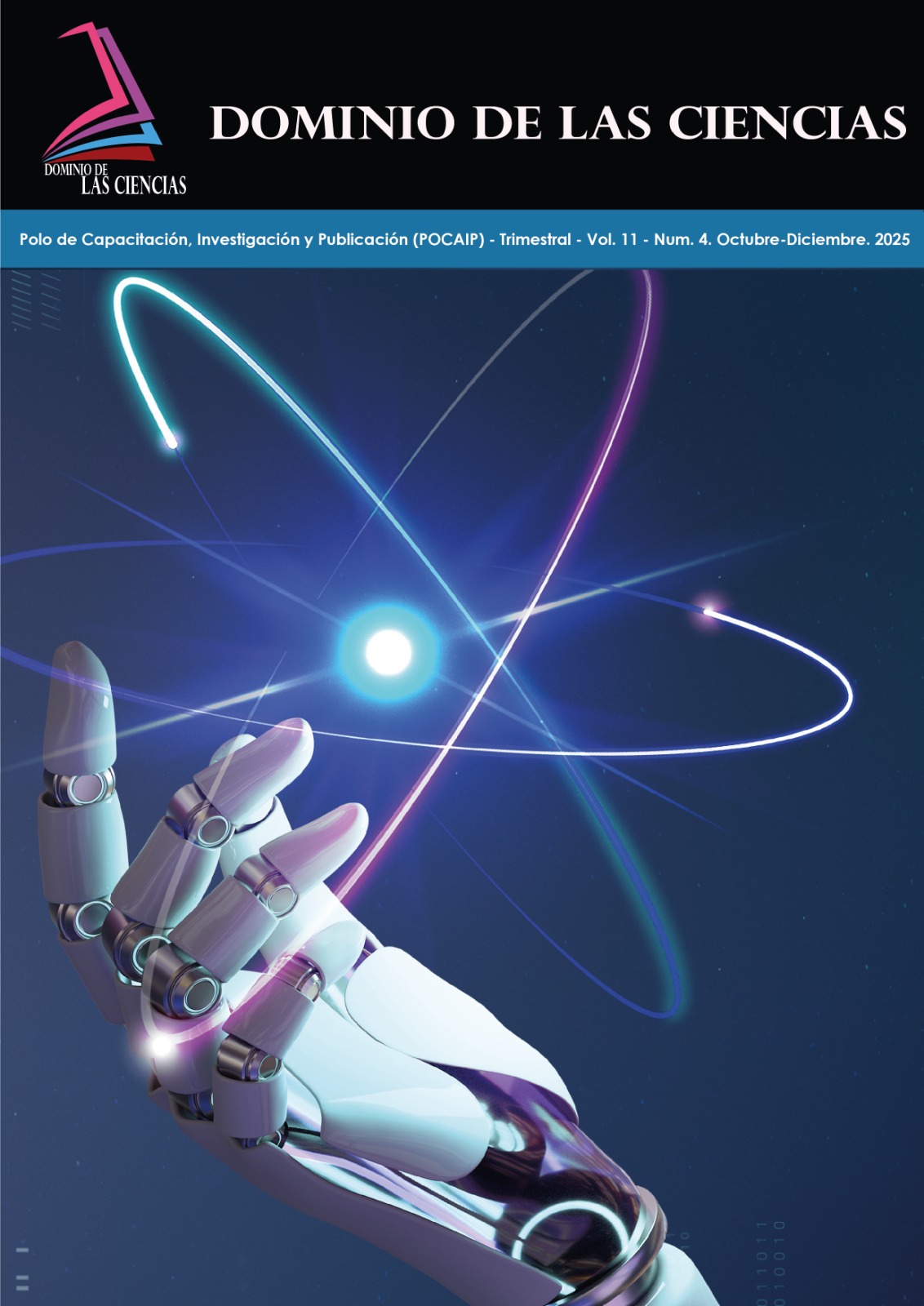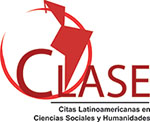Realidad aumentada como estrategia didáctica para la enseñanza de la biodiversidad: un enfoque innovador en Biología y Ciencias Naturales
DOI:
https://doi.org/10.23857/dc.v11i4.4548Palabras clave:
realidad aumentada, biodiversidad, educación secundaria, tecnología educativa, aprendizaje activoResumen
El presente estudio tiene como objetivo evaluar la efectividad de la realidad aumentada como estrategia didáctica para la enseñanza de la biodiversidad en estudiantes de educación secundaria. Para ello, se empleó un diseño cuasi experimental de enfoque correlacional y descriptivo con 80 estudiantes distribuidos en un grupo experimental y uno control. Se utilizó un test estructurado para medir el desarrollo de destrezas en relación con los conceptos de biodiversidad. El test fue validado por expertos y mostró una alta confiabilidad (alfa de Cronbach = 0.89). Se calculó la correlación de Pearson, la t de Student y el tamaño del efecto de Cohen para evaluar las diferencias entre los grupos.
Los resultados mostraron que el grupo experimental, que utilizó la realidad aumentada, presentó una mejora significativa en todas las destrezas evaluadas, con un porcentaje de mejora que varió entre el 16% y el 25%. Las destrezas más destacadas fueron la interacción con especies virtuales y la comprensión de las interacciones bióticas. Además, se observó una disminución en la desviación estándar del grupo experimental, lo que indica una mejora consistente en los estudiantes. En conclusión, la realidad aumentada demostró ser una herramienta pedagógica efectiva para mejorar la comprensión y las habilidades relacionadas con la biodiversidad. Este estudio contribuye al conocimiento sobre el uso de tecnologías emergentes en la educación y su impacto en el aprendizaje de las ciencias naturales.
Citas
Anderson, C. A., & Shattuck, J. A. (2012). Games, learning, and society: Learning and game design as learning tools. Games and Culture, 7(3), 131-145. https://doi.org/10.1177/1555412012453871
Almerich, G., Mas, L., & Pujol, E. (2015). The role of educational technology in enhancing learning outcomes: A study of the effect of interactive whiteboards in high school classrooms. Technology, Pedagogy and Education, 24(4), 1-18. https://doi.org/10.1080/1475939X.2015.1101710
Bacca, J., Baldiris, S., Graf, S., & Romero, M. (2014). Augmented reality trends in education: A systematic review of research and applications. Educational Technology & Society, 17(4), 133-147. https://www.jstor.org/stable/jeductechsoci.17.4.133
Chang, C. K., Chen, F. H., & Lin, C. Y. (2012). Interactive learning via augmented reality and serious games for enhancing the science learning experience. Journal of Educational Technology & Society, 15(2), 264-275. https://www.jstor.org/stable/jeductechsoci.15.2.264
Cheng, K. H., & Tsai, C. C. (2013). Affordances of augmented reality in science learning: A review of research and future directions. Educational Research Review, 9, 1-9. https://doi.org/10.1016/j.edurev.2012.08.002
Dede, C. (2009). Immersive interfaces for engagement and learning. Science, 323(5910), 66-69. https://doi.org/10.1126/science.1167311
George, D., & Mallery, P. (2016). IBM SPSS statistics 23 step by step: A simple guide and reference. Pearson Education.
Juan, A., Rodríguez, R., & Martínez, F. (2016). Augmented reality in biology education: Exploring the effectiveness of augmented reality applications in the classroom. Interactive Learning Environments, 24(2), 1-15. https://doi.org/10.1080/10494820.2016.1155549
Kapros, V., Xenos, M., & Papaloucas, P. (2016). Interactive applications of augmented reality in education: An investigation into students’ attitudes toward AR learning tools. Journal of Educational Computing Research, 54(2), 243-259. https://doi.org/10.1177/0735633116635322
Köller, O., & Möller, M. (2015). The effects of interactive augmented reality applications on student learning in science classrooms. Educational Technology Research and Development, 63, 257-272. https://doi.org/10.1007/s11423-015-9402-3
Mikropoulos, T. A., & Natsis, A. (2011). Educational virtual environments: A ten-year review of research and development. Educational Technology & Society, 14(3), 1-12. https://www.jstor.org/stable/jeductechsoci.14.3.1
Mikropoulos, T. A., & Koutsouba, M. (2017). The impact of augmented reality on students' cognitive development in educational settings. Journal of Educational Psychology, 109(5), 1-19. https://doi.org/10.1037/edu0000189
Nunally, J. C., & Bernstein, I. H. (1994). Psychometric theory (3rd ed.). McGraw-Hill.
Radu, I. (2014). Augmented reality in education: A meta-review and cross-media analysis. Personal and Ubiquitous Computing, 18(6), 1533-1543. https://doi.org/10.1007/s00779-013-0727-2
Rieber, L. P. (1996). Seriously considering play: Designing interactive learning environments based on the use of games. Educational Technology Research and Development, 44(2), 43-58. https://doi.org/10.1007/BF02300540
Silva, P. (2025). Lean Office strategies in the context of real estate projects. Journal of Business Efficiency, 12(4), 100-112.
Wang, Y. H., & Chien, T. T. (2013). The effectiveness of augmented reality in teaching and learning the biological and environmental sciences: A systematic review of the literature. Journal of Educational Technology & Society, 16(3), 1-12. https://www.jstor.org/stable/jeductechsoci.16.3.1
Wojciechowski, R., & Cellary, W. (2013). Augmented reality in education—cases, places, and potential. In Proceedings of the 12th International Conference on Virtual Reality, 73-76. https://doi.org/10.1109/VR.2013.6549377
Yang, S. C., & Chen, Y. C. (2014). Effects of an augmented reality-based learning environment on students' learning motivation and performance. Educational Technology & Society, 17(3), 169-183. https://www.jstor.org/stable/jeductechsoci.17.3.169
Descargas
Publicado
Cómo citar
Número
Sección
Licencia
Derechos de autor 2025 Mayra Cristiana Manobanda Ichina, María Maricela Llerena Aguilar, Lilia Patricia Salinas Balladares, Omar Antonio Molina Oña

Esta obra está bajo una licencia internacional Creative Commons Atribución 4.0.
Authors retain copyright and guarantee the Journal the right to be the first publication of the work. These are covered by a Creative Commons (CC BY-NC-ND 4.0) license that allows others to share the work with an acknowledgment of the work authorship and the initial publication in this journal.







